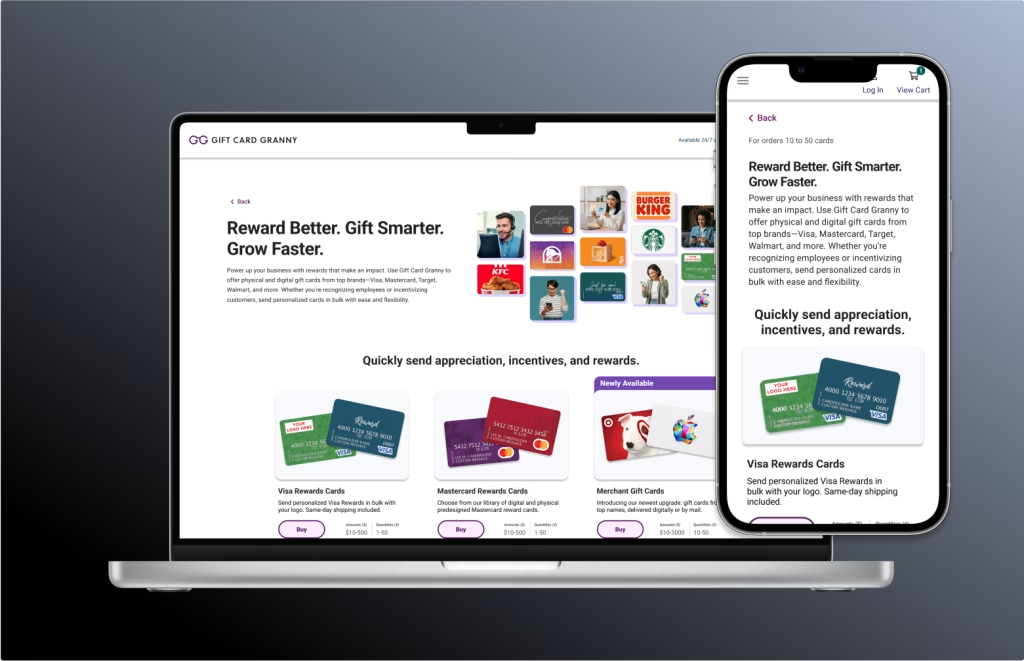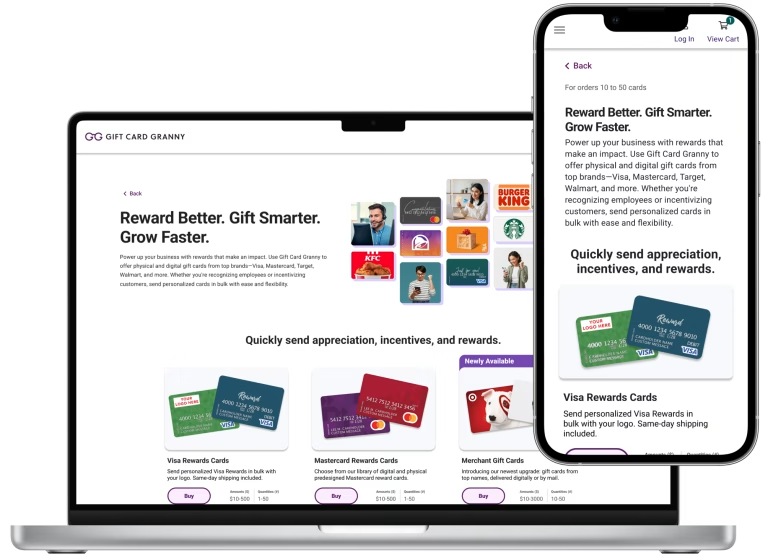
Overview
GiftCardGranny helps businesses purchase bulk gift cards for employees, clients, and promotions. The site offers businesses gift cards for corporate rewards and incentives; however, business users experienced friction in understanding the product offerings, associated costs, and order workflows. Conversion rates have cooled off, and we’re seeing a downturn; support inquiries have returned to high levels, and mobile experiences were suboptimal.
Goal: Redesign this business gift card experience by increasing clarity, reducing friction, improving trust, and ultimately increasing business account requests and larger order conversions.
Company:
Wolfe, LLC
Role:
Senior Product Designer
Project Type:
UX / UI Redesign, Heuristic Evaluation, Conversion Optimization
Tools Used:
As Gift Card Granny expands its services, it faces common scaling issues. The business section struggled to support decision-makers seeking bulk gift cards. Users often experience frustrations, such as difficulty finding information, repeated errors, unclear calls to action, and a complex checkout process, which hinder purchases. Design and usability gaps, including outdated visuals and mixed messaging, hurt trust, especially among business buyers needing clear justification and seamless fulfillment. The goal was to modernize the experience and rebuild confidence, reaffirming Gift Card Granny’s reputation as a reliable partner for business incentives.
The objective was to reimagine the Gift Card Granny for Business experience, driving higher engagement and trust while reducing barriers to purchase. Specifically, the redesign aimed to increase conversion rates, reduce cart abandonment, and strengthen brand credibility among business buyers. Achieving this required simplifying the purchase journey through clearer navigation and calls-to-action, modernizing design elements to match user expectations, and providing transparent information on pricing, fulfillment, and support. All this cannot be accomplished without the focal point being the point of entry and how we’re handling exploration and feedback.
Step One: Discover
Heuristic Evaluation: Conducted a review using usability heuristics, identifying gaps in visibility, consistency, and error prevention.
Behavioral Observation: Full Story was instrumental in determining the users’ exploration and interaction patterns. This allowed me to adjust the designs by seeing the heat and journey mapping.
User Sentiment: Utilizing Zendesk, we set out to review where the gaps are in the communication of the products offered, and how users are perceiving the build process.
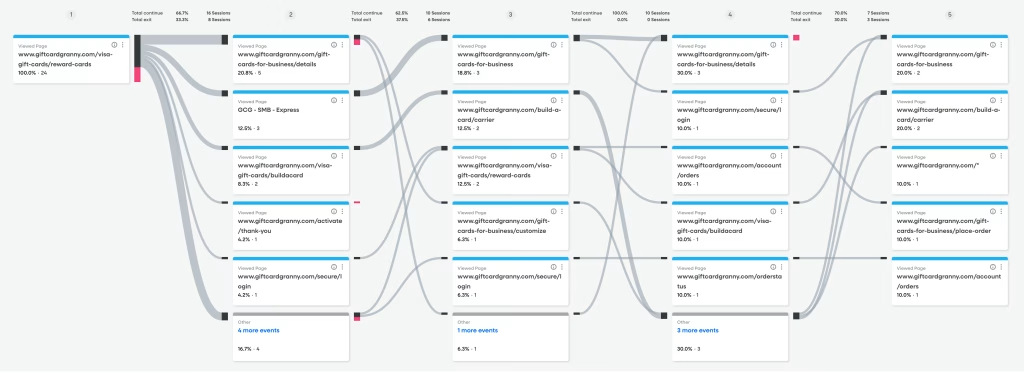
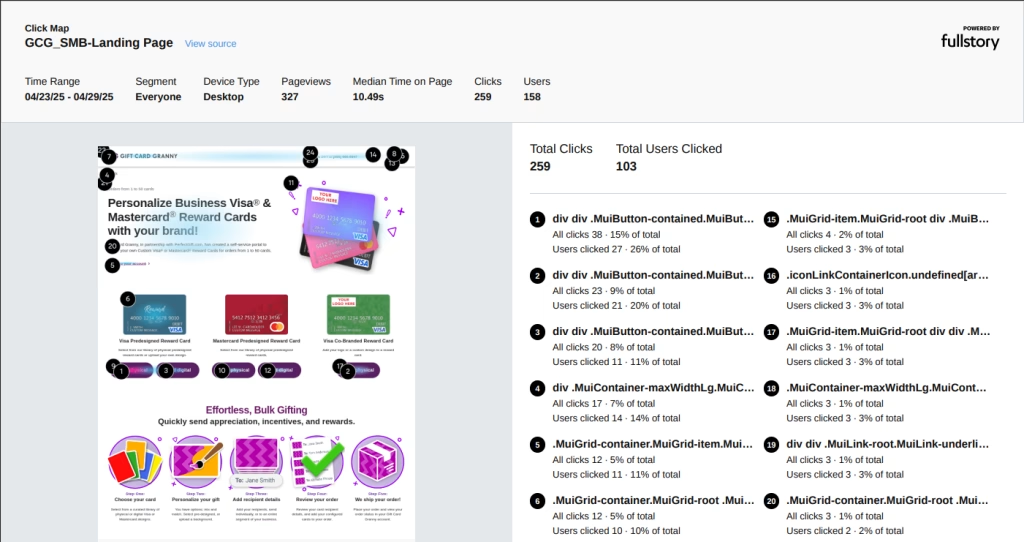
Step Two: Define
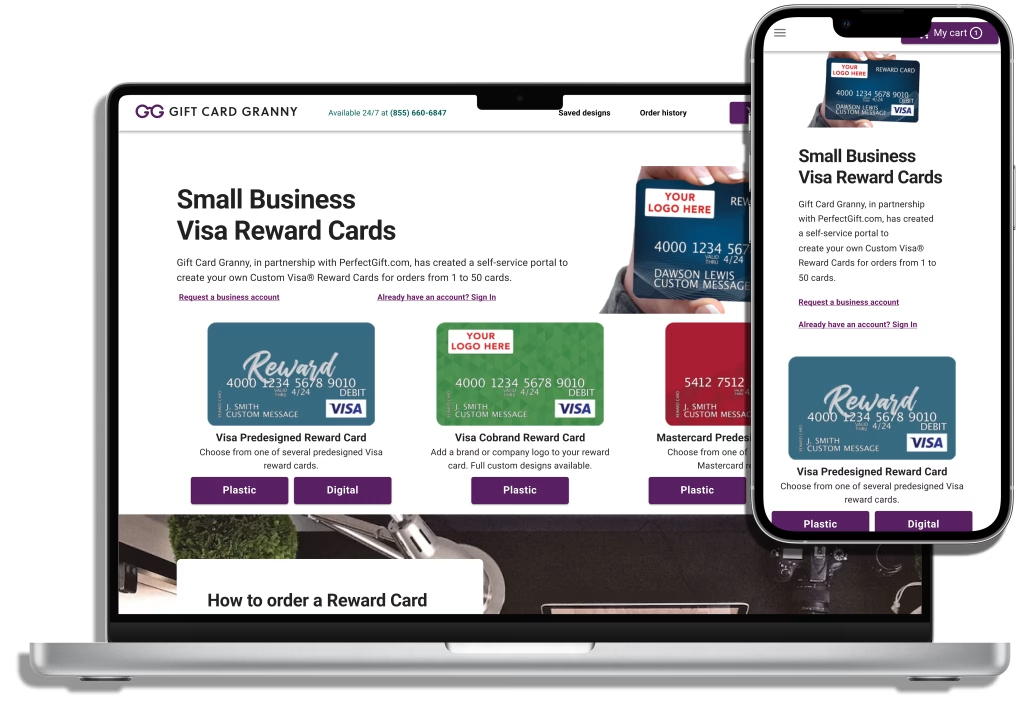
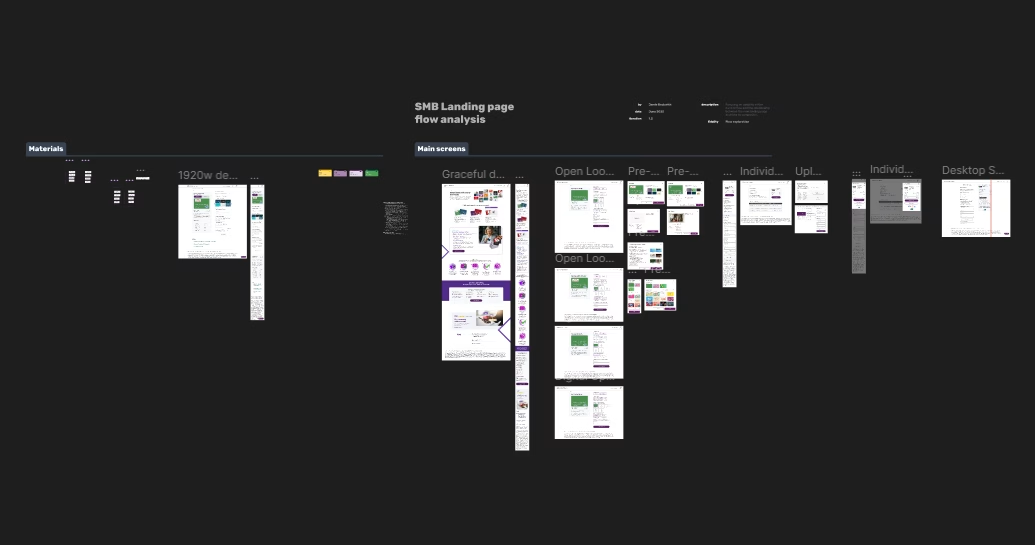
Step Three: Design & Iterate
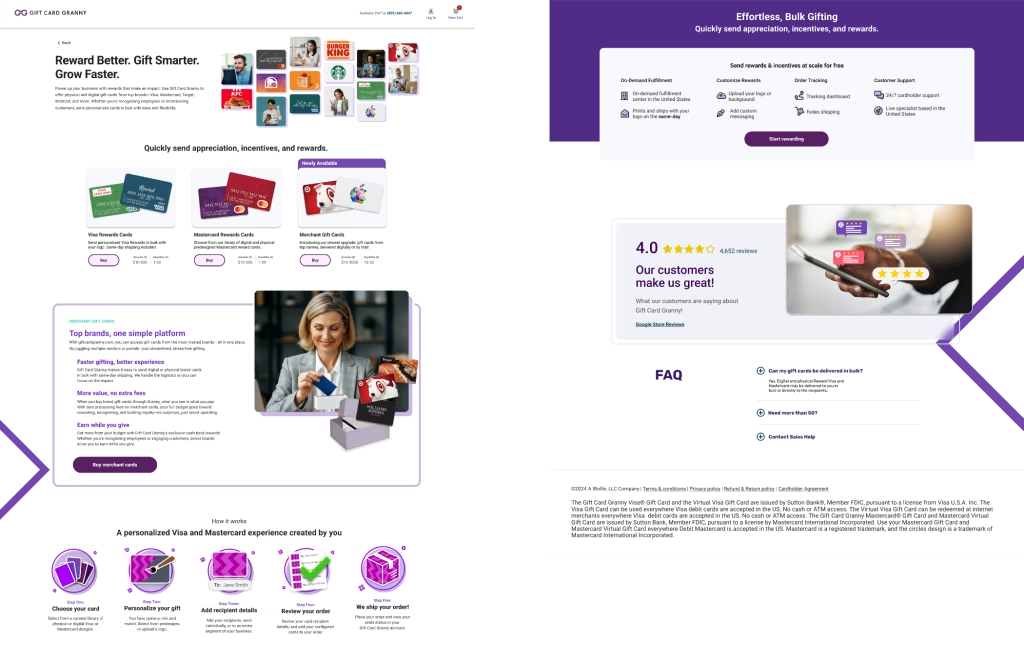
Step Four: Deliver & Launch
When we examined the user experience, one theme repeatedly emerged: clarity must come first. Business users don’t want to guess—they still need pricing, timelines, and product details upfront to make informed decisions.
From there, we learned that trust directly influences conversions. Preventing errors, creating clear messaging, and providing visible support options gave users the reassurance they needed to proceed.
But these insights didn’t come overnight. Through iterative testing with heatmaps and GA4, we identified friction points that weren’t obvious at first glance. Data helped us refine flows, messaging, and layouts.
One of the most significant improvements was simplifying journeys. Using progressive disclosure and inline validation reduced cognitive load and made complex tasks easier.
Finally, we couldn’t overlook the importance of mobile engagement. After optimizing layouts and enhancing calls-to-action on small screens, we saw a substantial increase in interaction and completion rates.
